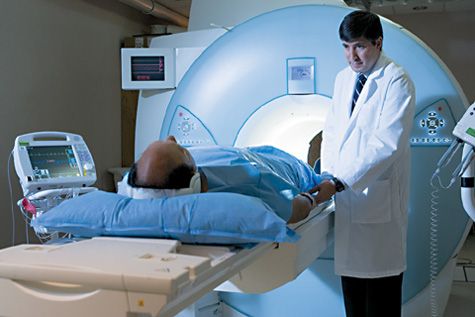New publications
New screening method accurately identifies the type of dementia
Last reviewed: 01.07.2025

All iLive content is medically reviewed or fact checked to ensure as much factual accuracy as possible.
We have strict sourcing guidelines and only link to reputable media sites, academic research institutions and, whenever possible, medically peer reviewed studies. Note that the numbers in parentheses ([1], [2], etc.) are clickable links to these studies.
If you feel that any of our content is inaccurate, out-of-date, or otherwise questionable, please select it and press Ctrl + Enter.

A new method of magnetic resonance imaging will help doctors quickly determine whether a patient has Alzheimer's disease or another type of dementia.
Alzheimer's disease and frontotemporal lobar degeneration are types of dementia that have similar symptoms but different underlying pathological processes.
Scientists say it is possible to determine fairly accurately what a patient has without the help of invasive tests such as a spinal tap. During this procedure, a thin, hollow needle is inserted between two vertebrae in the lumbar region of the back and cerebrospinal fluid is collected. Invasive tests help to determine fairly accurately whether a patient has Alzheimer's disease or frontotemporal lobar degeneration, but patients find these procedures unpleasant, and while doctors persuade patients to agree to such a diagnostic method, time passes and treatment is delayed.
In addition, similar symptoms of diseases also cause difficulties in diagnosis and therefore sometimes there are problems with the exact definition of the disease.
The study involved 185 people diagnosed with one of the neurodegenerative diseases mentioned above. But to finally determine what exactly the patient was sick with, a spinal puncture and high-resolution magnetic resonance imaging were required.
Read also: Dementia in Alzheimer's disease
In 32 patients out of 185, an accurate diagnosis was made using invasive intervention, which helped to identify the genetic mutation. In addition to this diagnostic method, specialists also used magnetic resonance imaging to confirm the results of the first test. The results were completely consistent, both methods coped with the task perfectly.
Both diagnostic methods helped to detect two biomarkers of these diseases in the cerebrospinal fluid. One of them is beta-amyloid, which is a biomarker of Alzheimer's disease, and the second is tau protein, which indicates the disease frontotemporal lobar degeneration.
Study author Cory McMillan, MD, of the University of Pennsylvania, says the new diagnostic method could identify any borderline cases.

“This new screening method is very important because the treatments are directed at the main abnormal proteins, so it is important to know exactly what the patient has and what treatments to use,” comments Dr. McMillan. “In addition, the new MRI can be used as a diagnostic tool for any borderline cases, and it can also be useful in clinical trials where MRI is important for repeated monitoring over time of these biomarkers.”
